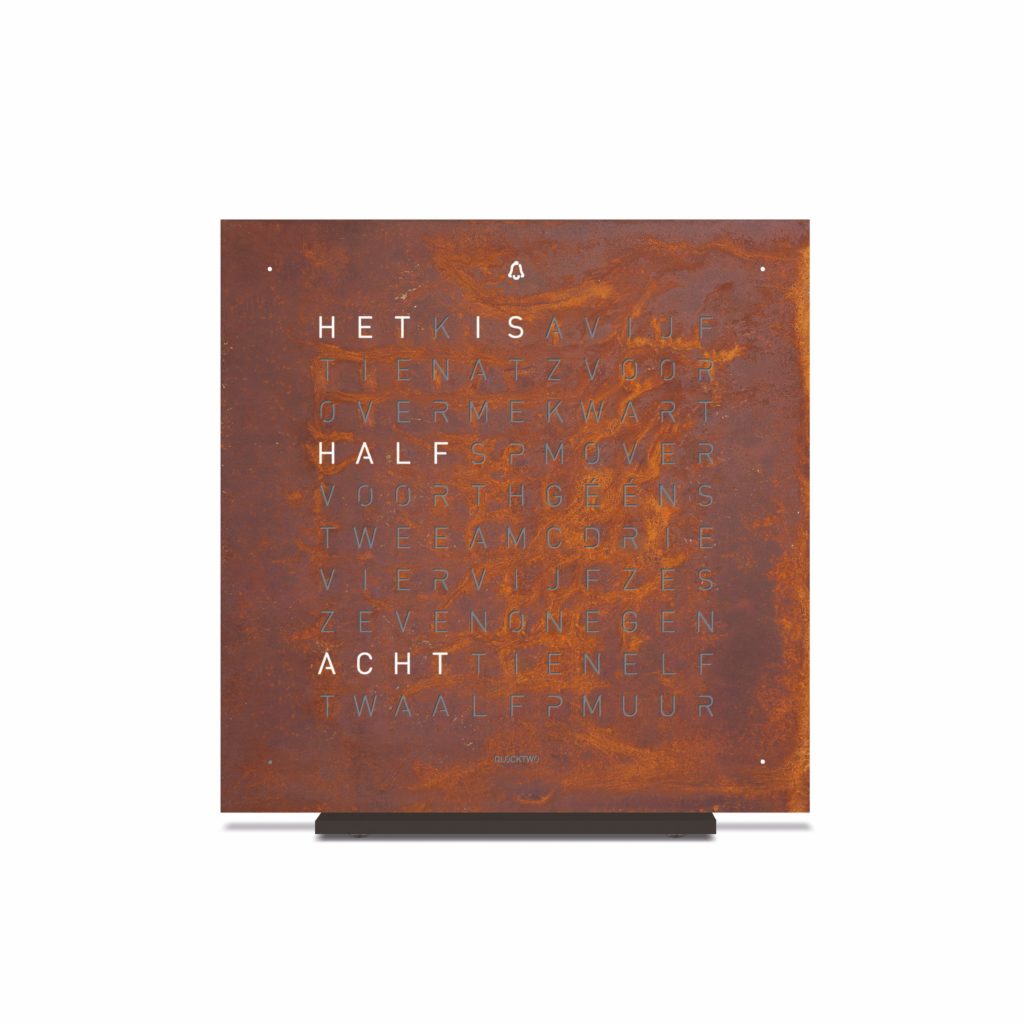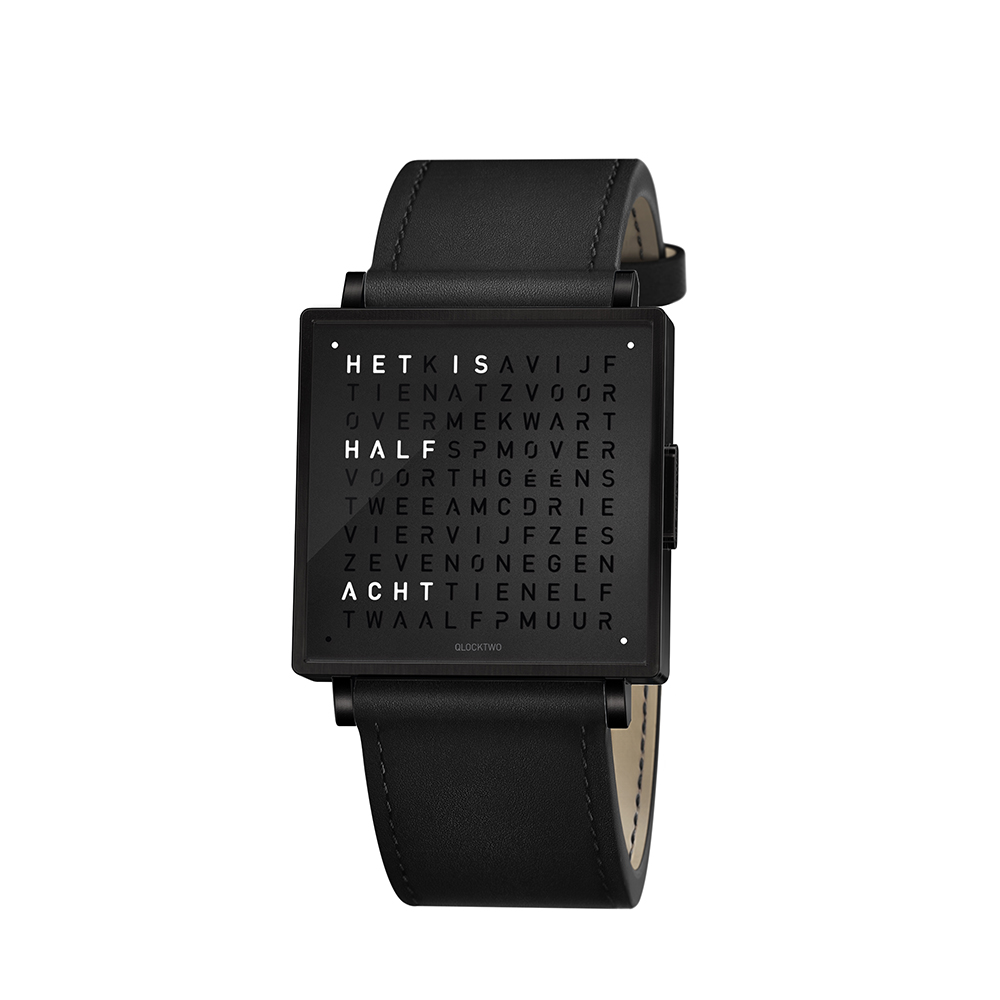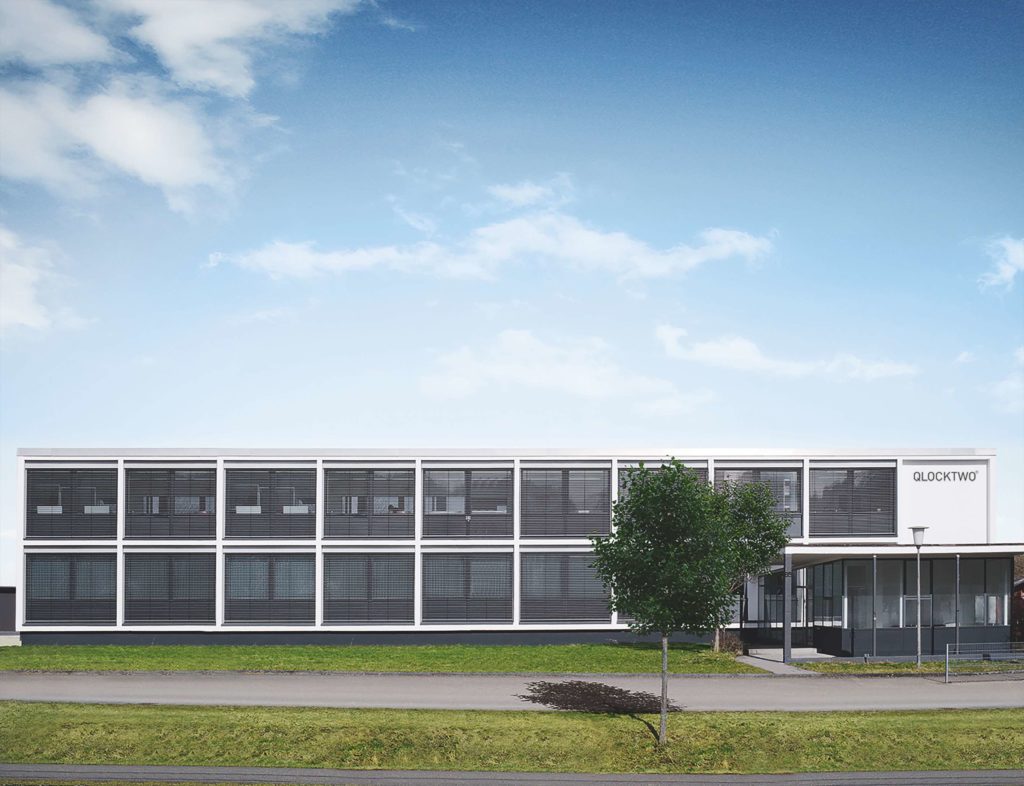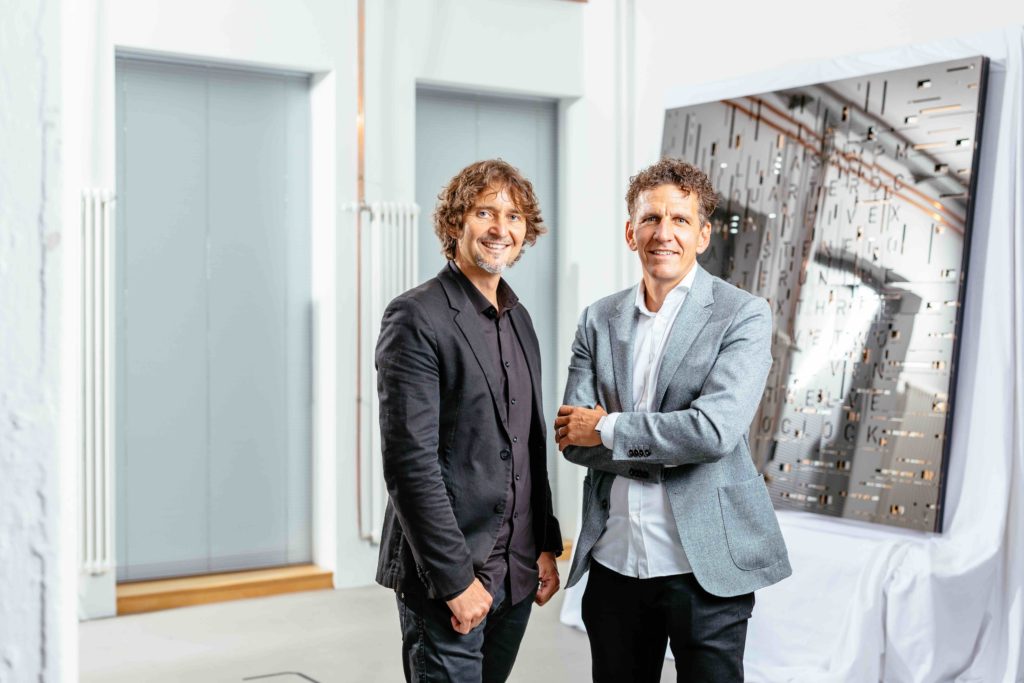No hands, no numbers, but neat sentences indicating the time. And that in many languages. The unique concept of QlockTwo was conceived by German designers Andreas Funk and Marco Biegert of studio Biegert & Funk. A short interview.
Text: Gerben Bijpost
Qlocktwo's wall clocks and watches are -until now- always square. Can we expect other shapes in the near future?
Biegert: The square shape is an elementary part of what Qlocktwo unique makes. It forms a strong visual contrast with other clocks. For our core products, that square shape will therefore always be an essential element of the DNA.
You play with the colours, materials and sizes of the Qlocktwo concept to keep it fresh and relevant. But how do you recognise the moment when an existing design needs to be modernised to remain successful?
Funk: Qlocktwo does not chase trends. The rhythm of time in today's world is becoming increasingly fragmented. These days, it is all about seconds and fractions of seconds in which actions take place that demand our attention. Evolutionarily, humans are not suited to function in such short periods of time. We want people to escape these fast-moving environments of today and experience a moment of true awareness. Anything that craftily supports this idea of timelessness could be part of our objects in the future.

The Qlocktwo concept is available in many languages. Is it suitable for every language?
Biegert: For us, it is interesting to see how time can be represented in so many languages and dialects within the Qlocktwo matrix. Whenever we felt we had reached a limit, the languages we looked at turned out to have alternative ways of representing time. For example, in Turkish, saying 'it is five to five' or 'it is five past five' changes the ending of the word 'five' from 'beşe' to 'beşi'. So, as you can see, making a matrix also requires a thorough knowledge of the language. But so far, we have managed to solve all the challenges we encountered.

Apart from Qlocktwo, are you also involved in other designs?
Funk: Qlocktwo is actually a triptych, or a work of art made up of three parts. Until now, we have only executed one part - the Qlocktwo as you know it. The other two parts have been designed over decades. And by way of teaser can I hereby announce that we will reveal the second element of the triptych very soon
Who is your favourite (product) designer at the moment?
Biegert: There are many. I would say my absolute all-time favourite is probably Jony Ive, Apple's most influential design leader. Billions of people still benefit from his undisputed product design every day.
Funk: There is no doubt about that. For me, that's Ludwig Mies van der Rohe, who had a unique impact on international modern architecture and design and created simply brilliant work in various fields.
And what is your favourite (product) design of all time?
Biegert: Being from the 'Schwabenland', I would say that the Porsche 911 is the classic of all time. Hard to beat.
Funk: Good choice. Mine is probably Mies van der Rohe's Barcelona chair.

If you imagine the most perfect match between a Qlocktwo and a particular building, who would be the architect of that building?
Biegert: I hope it doesn't get boring, but again: Mies van der Rohe. And when I think of a particular building, I especially like the New National Gallery in Berlin.
Funk: I myself would choose David Chipperfield. His buildings are truly unique and count as some of the most iconic landmarks around the world.
What is your favourite moment of the day?
Biegert: Early morning is my favourite time for reflection and creative thinking. The warm colours of a sunrise and the golden morning light are a magical moment when the day is still an untold story and full of promise.
Funk: For me it's the blue hours, the twilight, when light fades into darkness or vice versa. And when moon and sun have a brief encounter, an overlap. That is a fascinating time of day, which I like to observe consciously.



